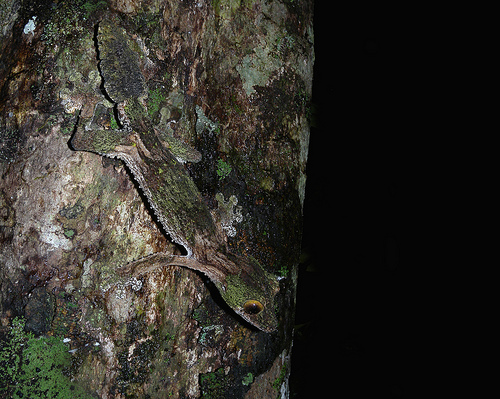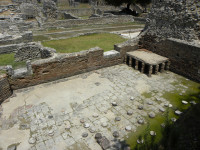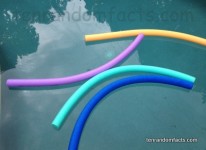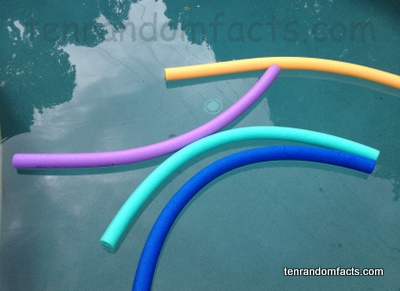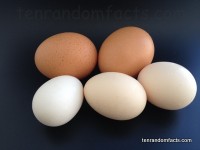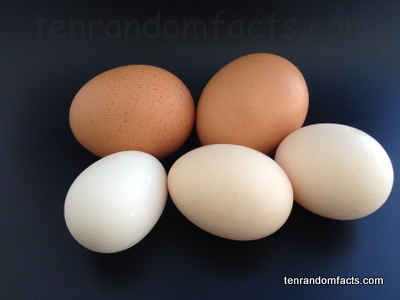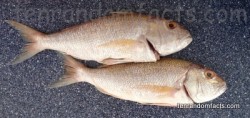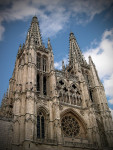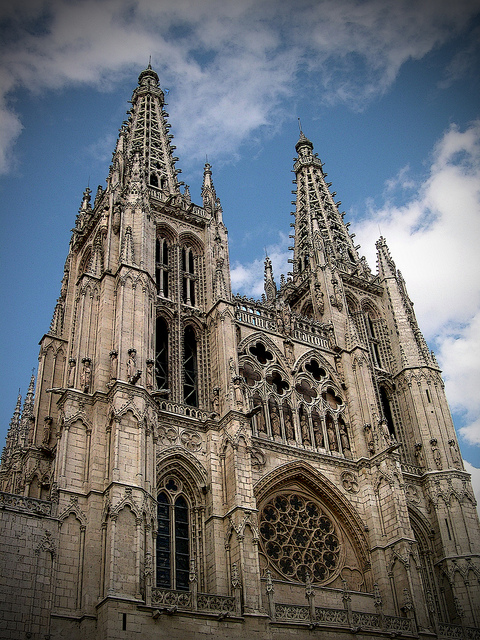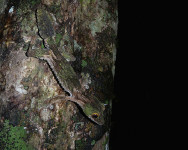
Hide among the vegetation like leaf-tail geckos.
- Leaf-tail geckos are a reptile, or specifically, a gecko, native to Africa’s tropical Madagascar.
- ‘Leaf-tail geckos’ are also known as ‘leaf-tailed geckos,’ and ‘flat-tailed geckos’.
- There are at least 14 species of leaf-tail geckos and their scientific or genus name is Uroplatus, and they are from the family Gekkonidae, a family of geckos.
- Leaf-tail geckos can grow to be 10 to 30 centimetres (4 to 12 inches) in length, and weigh 10 to 30 grams (0.35 to 1 ounce) in weight.
- The skin of leaf-tail geckos can be a combination of green, brown, grey and black; and they usually have coloured patterns that mimic their surroundings, and depending on the species, they will look similar to either leaves or bark that they hide among.
A Leaf-tail Gecko
Image courtesy of Frank Vassen/Flickr
- Leaf-tail geckos have digits or toes, some of which have small claws, that can be used to grip onto numerous surfaces; and they have a leaf shaped tail.
- During the day, leaf-tail geckos camouflage themselves from predators in trees or bushes, and they become active hunters during the night.
- The diet of leaf-tail geckos primarily consists of insects, as well as worms and spiders, while other reptiles and rodents are sometimes consumed.
- Female leaf-tail geckos generally lay between two to four eggs at a time; and the reptile has an average life span of two to nine years.
- Leaf-tail geckos are threatened by illegal hunting for the pet industry, along with habitat loss, and some species are listed as endangered, vulnerable and near threatened.
Bibliography:
Leaf-tailed Gecko, 2013, A-Z Animals, http://a-z-animals.com/animals/leaf-tailed-gecko/
Uroplatus, 2014, Wikipedia, http://en.wikipedia.org/wiki/Uroplatus






